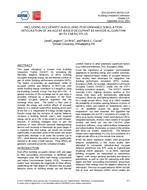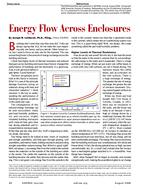Since the turn of the Century, floors in refrigerated facilities kept at 0°C (32°F) or lower have buckled and heaved. The destruction of floors in such facilities has been widespread, and many systems have been used in an attempt to prevent such heavage in new facilities. A few methods have been used to reduce the heavage in existing facilities where floors have already buckled.
The problem of heaved floors has not been universally solved since most methods have been used either indiscriminately or the applicator has not understood what principles are involved in the methods he is using. Once a facility has been built, and if the method of floor heavage prevention is not adequate and has been installed improperly, it is not only difficult, costly, but also time-consuming to rectify the mistakes after the floor has in fact heaved even though a system was installed to prevent such a heavage. The question seems to be always in front of us: "What system can I use in preventing frost heavage under the refrigerated facility being designed and constructed which will be trouble-free, least costly, and installed with reasonable simplicity?"
To answer this question, one has to go back to the basic principles of physics involved with why a floor actually heaves.
Citation: Symposium, ASHRAE Transactions, Volume 87, Part 2, Cincinnati, Ohio
Product Details
- Published:
- 1981
- Number of Pages:
- 5
- File Size:
- 1 file , 590 KB
- Product Code(s):
- D-CI-81-13-4


